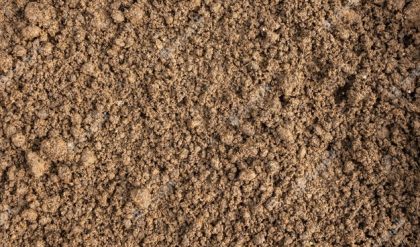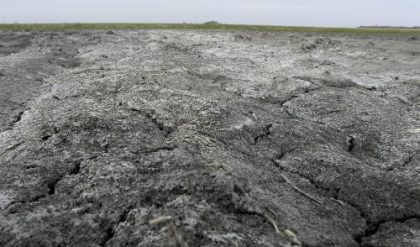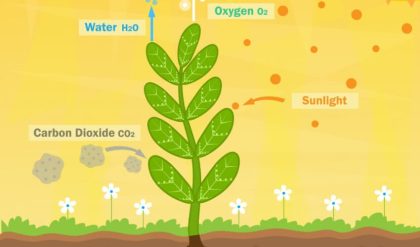
Soil structure is the result of the spatial arrangement of the solid soil particles and their associated pore space. Aggregation mainly depends on the soil composition and texture, but is also strongly influenced by other factors such as biological activity, climate, geomorphic processes or the action of fire. Structure is a typical morphological soil property, which allows differentiating soil of geological material. Because of its importance, structure is a property commonly described in soil studies
Organic and mineral soil particles are not isolated from each other, but form structural aggregates (also called “peds”). In 1961, Blackmore and Miller observed how the Ca-montmorillonite may be arranged in groups of four or five particles, depending on various soil characteristics.

Thin section of a surface sandy soil under cross polarized light showing sand grains and cellular plant material.
The fact that soil particles do not form a continuous and compact mass, but are associated, involves an interconnected pore space, makes possible the development of life in the soil. The volume formed by pores, channels, chambers and cracks allows the movement of fluids (air and water) in the soil, providing a favorable environment for microbial activity and facilitating root growth of plants. Some authors consider that more than one property, structure is a state of soil, because when dry, it becomes clear, but if it is wet, the soil becomes massive, no cracks are distinguishable, and structure disappears. Texture, biological activity and a number of physicochemical conditions allow the aggregation of soil particles. The predominance of one or other process creates various types of structure. Aggregation is strongly conditioned by colloids (clay and organic matter) and soil cementing substances (carbonates, sesquioxides, etc.), which coat solid particles, including them in groups (aggregates). If the proportion of colloids or cementing substances is too low, solid particles remain dispersed. Flocculation of colloids gives rise to the co-precipitation of colloidal particles (clay and organic matter), forming microaggregates (<250 μm), which then evolve resulting in macroaggregates (>250 μm). In the formation of small fabric units (cluster and domains), the inorganic bonds are the most important, while in the aggregate stabilization the organic ones play a more relevant role (humic cements).
Flocculation induced by cations in the soil solution plays an important role in the development of aggregates. Calcium and magnesium (in calcareous soils) or iron and aluminium (in acid soils) favour the formation of stable aggregates. In contrast, monovalent cations as sodium contributes to dispersion of aggregates. Also, cementing agents as calcium carbonate (in calcareous soils) or iron oxides (acid soils) may enhance soil aggregation. In the formation of macroaggregates, biological agents are also involved, as plants (roots), animals (earthworms, arthropods, etc.), microorganisms (bacteria and, especially, fungi) are also important.

Fragment of calcium carbonate from an unearthed petrocalcic horizon. Photo by A. Jordán.
The degree of development of the structure and aggregate stability depends on the type of particles present and the forces of attraction/repulsion taking place. This can lead to particle packing or aggregate formation. Packing is important when the forces of attraction / repulsion are negligible in the absence of electric charge (such us between sand particles). In sandy soils, the surface tension of the film of water adsorbed on the surface of the grains may cause a certain binding capacity.
Aggregate stability
Soil structure is not a stable parameter; it may vary depending on weather conditions, management, soil processes, etc. In general, the most important causes of the degradation of soil structure are:
§ Expansion of swelling clays (montmorillonite type) during wet periods.
§ Rain, especially if it results in a violent dilution of cations, which promotes flocculation of the colloids.
§ Loss of organic matter (common in cropped or eroded soils).
§ Acidification, resulting in destabilization of microaggregates.
Classification of structure
Soil structure can be classified according to the presence of colloidal soil particles and their interaction with coarser particles. According to this, soil structure can be classified in three broad categories:

Poorly developed soils on sandy plains under Scots pines in the Dzukija National Park (Lithuania).
§ Single grained. Colloids are scarce and soil textural composition is dominated by coarse particles without aggregation capacity, the grain structure is particularly loose.

Sandy soil from Moguer
§ Aggregated. The presence of colloids is moderate and coarse particles are arranged in small clods or aggregates. Aggregates are relatively porous, promoting aeration and soil permeability.
§ Massive. If the presence of colloidal particles is dominant, the soil appears cemented in one great mass due to the decrease of the pore volume, thereby decreasing aeration and drainage. In the dry season, clayey soils become massive. If swelling clays are present, shrinkage cracks appear
In the case of aggregated soils, aggregates can be classified by morphology in different groups. According to FAO, the types of soil structure are:
§ Blocky. Blocks or polyhedrons, nearly equidimensional, having flat or slightly rounded surfaces that are casts of the faces of the surrounding aggregates. Subdivision is recommended into angular, with faces intersecting at relatively sharp angles, and subangular blocky faces intersecting at rounded angles.


§ Granular. Spheroids or polyhedrons, having curved or irregular surfaces that are not casts of the faces of surrounding aggregates.

§ Platy. Flat with vertical dimensions limited; generally oriented on a horizontal plane and usually overlapping.

§ Prismatic. The dimensions are limited in the horizontal and extended along the vertical plane; vertical faces well defined; having flat or slightly rounded surfaces that are casts of the faces of the surrounding aggregates. Faces normally intersect at relatively sharp angles.

§ Columnar. Prismatic structures with rounded caps are distinguished as columnar.
§ Rock structure Rock structure includes fine stratification in unconsolidated sediment, and pseudomorphs of weathered minerals retaining their positions relative to each other and to unweathered minerals in saprolite from consolidated rocks.
§ Wedge-shaped. Elliptical, interlocking lenses that terminate in sharp angles, bounded by slickensides; not limited to vertic materials.
§ Crumbs, lumps and clods Mainly created by artificial disturbance, e.g. tillage.
Interpretation
Agronomically, well-structured soils easily crumble spontaneously when dry. So, when relatively dry it can be easily tilled, and when wet it does not adhere to the tools.
The surface of aggregated soils facilitates seedling emergence and water infiltration. A good aggregation prevents soil sealing and further formation of surface crusts.

In aggregated soils, enhanced water infiltration reduces runoff and water erosion, increasing the water available for plants. Also, aggregated soils allow a smooth flow of water, air and nutrients, promotes the development and activity of aerobic microorganisms, soil fauna and the penetration of roots. A well-structured soil is more resistant to erosion than the loose particles of sand, silt and clay and organic matter.






Comments are closed.